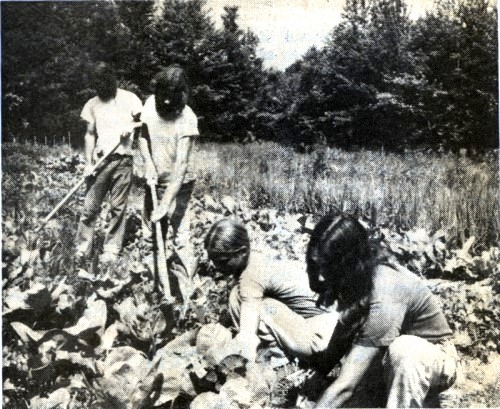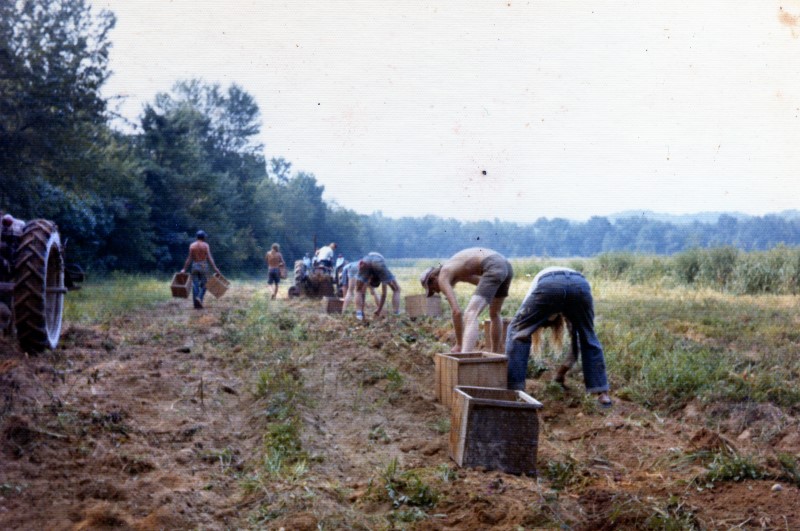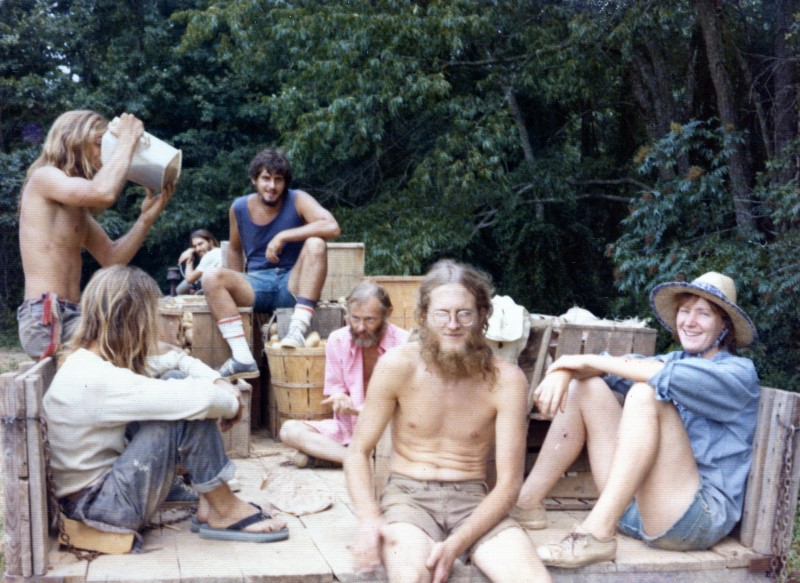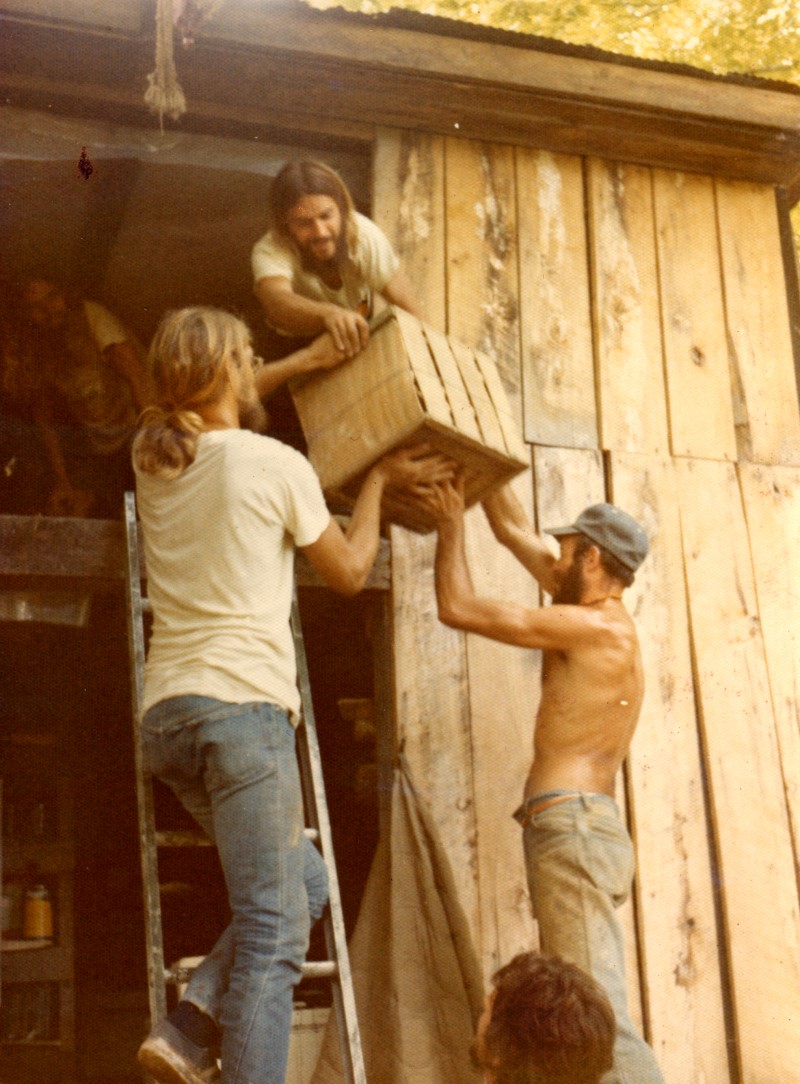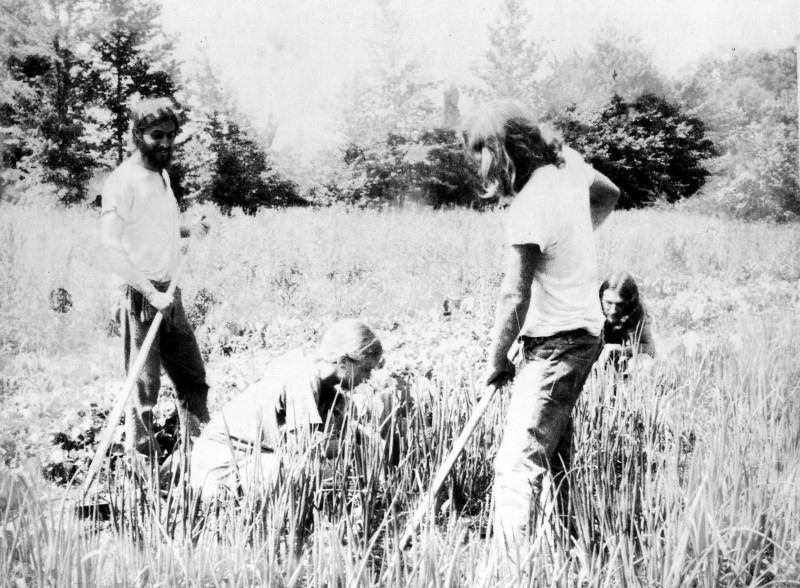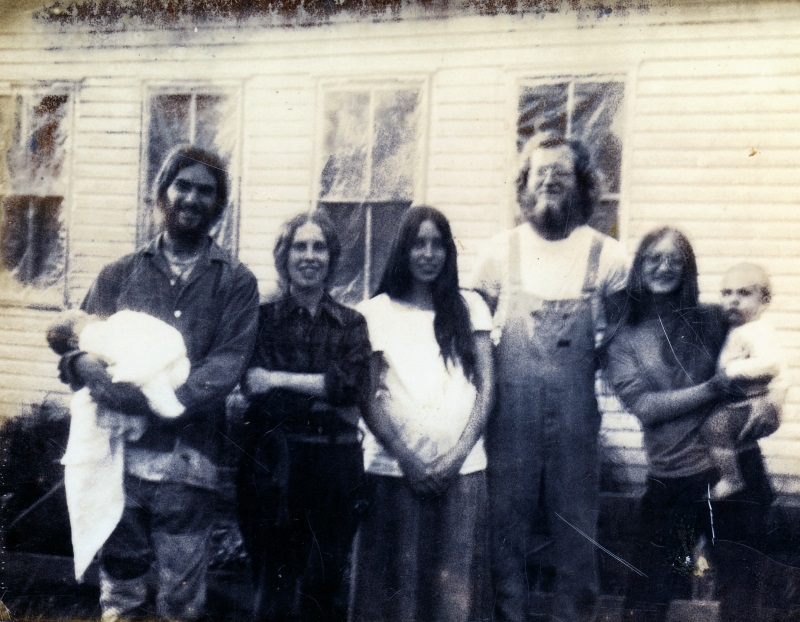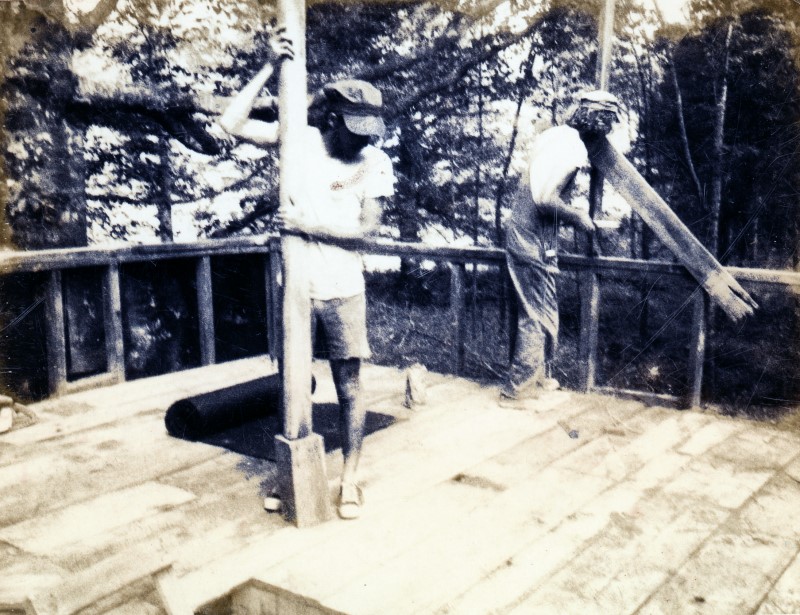Spiritual Community has Farm in Pellyton
May 31, 1975
Deborah and I left Tennessee to join with Clyde and Christine Gensert in the fall of 1974 to start the Green River Farm, a commune on 60 acres of bottom land in Central Kentucky. By the next summer, two other couples and some single folks had come to join us from Tennessee, and a number of other folks had joined us as well.
Douglas@thefarmcommunity.com
Editor’s note: The following is a story written by residents of the Green River Farm, a communal type organization at Pellyton, which is a branch of The Farm in Tennessee. Members are known by their first names to conform to the most informal atmosphere possible, and do not ordinarily use last names, except where required in legal documents. A certain curiosity has been aroused about the Green River Farm by Adair Countians., so the Daily Statesman asked Farm residents to explain something of what they are trying to do and some of the beliefs back of their project. This is the result of that request.
By Green River Farm Residents
PELLYTON – We’ve been living here for a while now and wanted to introduce ourselves.

From left to right are William, Cynthia and Benjamin, Deborah, Douglas and Jody Stevenson, Jeffery and Kathleen Canole, Clyde and Christine Gensert (Emma Louise was not present).
We are a spiritual community in Pellyton. To us, being a spiritual community means living with a group of folks who agree to help each other to live peaceful, truthful lives. We don’t believe in violence or anger, and we don’t worry about our possessions. Just like ACTS 2:44, 45, we distribute our possessions among ourselves as we have need, and give what we don’t need a way.
Our little community now has four married couples and three babies. We all got together through The Farm in Tennessee, which we are a branch of. There are more branch farms all over the country. Stephen Gaskin is our spiritual teacher and acting minister for these farms.

Construction – Presently farm residents are building on their land. All the material was salvaged from houses and barns in the neighborhood. Right now they are tearing down a house and barn. They are also earning money building for their neighbors.
One of the main teachings we follow is called right vocation. That means that our work is supposed to have spiritual significance – work is meditation, a way to express love.
To us, farming is a good way to do this.
We are trying to get into a position where we can grow enough food to help ease the world hunger situation. Our being vegetarian will help us do that, because we can grow up at ten times as much protein raising grain and soybeans as we could feeding that food to cattle. We don’t have much land or equipment this year, but we hope to have enough machinery to start sharecropping by next season.
This season, we will be finding out what it’s like going soybeans, corn, sorghum, and vegetables in this bottom land.
We already have a big garden, an acre of sweet corn, one and a half acres of bell peppers, and sweet potato slips for market.
We eat a lot of soybeans. They supply the protein in our diet; we’re complete vegetarians and we don’t eat meat, fish, eggs, milk, or cheese. Nutritionally it doesn’t matter where the protein in your diet comes from, so long as there is enough of it and it is of good quality.
Taste wise we enjoy this diet and have found that you can make everything with soybeans that you make with animal products: milk, yogurt, cheese, ice cream, whipped cream, mayonnaise, soy burgers, soy sausage. We also eat a wide variety of garden vegetables, grains, and other beans. This summer we will be canning and freezing produce for the winter.
The Farm in Tennessee where some of us on this farm came from, now has around 800 people on 1750 acres. It is like a school and the church, teaching people how to support themselves and live a good spiritual life.
They have a large farming crew that grows enough food to support The Farm all year and give some to needy causes through a nonprofit corporation called PLENTY. There is a construction crew building on and off The Farm.
There is also a printing operation which publishes material The Farm puts out.
The Farm takes care of much of our own medical needs, and has a team of midwives that have delivered around 300 babies.
Stephen is the Minister of The Farm, and he said:
“I’m a teacher, not a leader. If you lose your leader your leaderless and lost, but if you lose your teacher, there’s a chance that he taught you something and you can navigate on your own.”
We think we learned enough to start a small farm here and keep on learning.
We like living here a lot and have some fine neighbors, who are helping us to learn.
Below: More photos from The Green River Farm
Here are some of the many ways we eat soybeans:
Soyburgers
Drain 5 cups of cooked soybeans through a colander or strainer.
Mash beans with a potato masher and add while mashing:
3/4 to 1 cup of whole wheat flour
2 teaspoons of salt
1/2 teaspoon of pepper
1 tablespoon garlic powder
2 teaspoons oregano
1 teaspoon basil
1 onion, finely chopped
1 green pepper, finely chopped (optional)
2 tablespoons of mustard (optional)
Mix well. The battery should be quite stiff. To make patties, roll mix into a small ball, 1/2 inch to 2 inches in diameter. Then flatten the ball to 1/2 inch thick. Thin patties make better burgers because they stay crisp. Thick patties don’t get so well done in the middle. Fry in a generous amount of oil so they’ll be crisp. Serve in a burger bun with your favorite fixings. Makes 16 soy burgers.
Basic Cooked Soybeans
When whole soybeans are fully cooked, they are soft, juicy and delicious. When they are undercooked, they are on unpalatable and indigestible. If you’ve never tasted soft, fully cooked soybeans, you never really tasted soybeans.
The quickest, easiest, most efficient and most economical way to cook soybeans is with a pressure cooker. Following the directions that came with your pressure cooker, put the proper amount of soybeans and water in your cooker.
Add 1 tablespoon of oil, 1 tablespoon of salt, and one half teaspoon black pepper for every 2 cups cups of raw beans. Onions garlic or garlic powder, tomatoes, celery and spices – in your favorite combinations can also be cooked with the soybeans.
Cook 45 minutes to 1 hour after the steam is up. Let the cooker cool or cool with cold water.
If you don’t have a pressure cooker, soak beans overnight and cook upwards of six to eight hours, until soft enough to match on the roof of your mouth with your tongue.
Serve the boiled soybeans warm, with additional salt, pepper, and margarine to taste. Also try them with sauteed onions, ketchup, mustard, hot sauce, gravy, sweet and sour sauce, and soy sauce.
Another variation is to mix the soybeans with other means such as pintos. To do this, cook as directed above, omitting the salt until after the beans have cooked. Cooking with salt has no effect on the texture of soybeans, but it will toughen other beans. This variation will serve you give your soybeans a new, interesting flavor and a thicker broth, and it will stretch your supply of other, more expensive beans.
Soy Ice Cream – Ice Bean
3 cups milk, 1 cup sugar
1 half cup oil
Your favorite flavoring – for example, 2 & 1/2 tablespoons of Cocoa.
Mix the ingredients together and pour the mixture into your ice cream maker.
It’s a good way for kids and sick folks to get their protein.
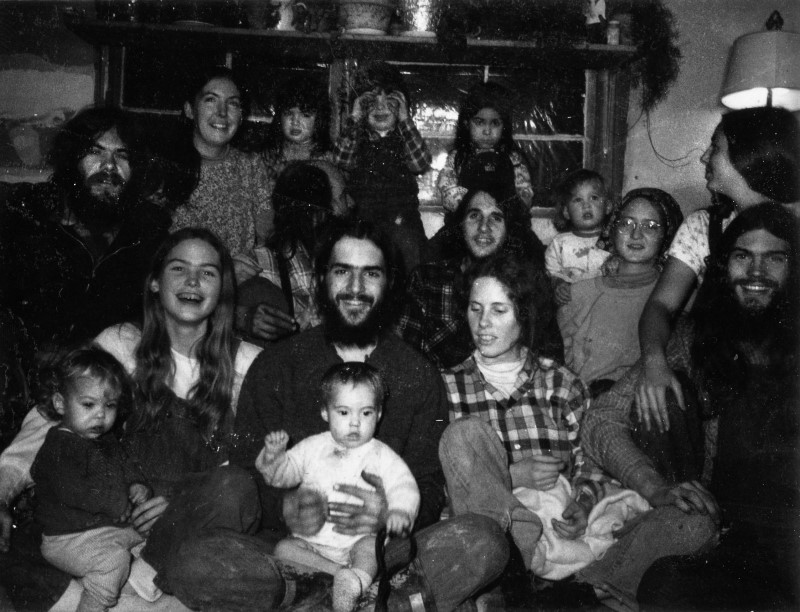
Top left to right: William Grady, Mary, Mary’s three children, Next row (tot the right): Douglas Stevenson, Jody Stevenson, Deborah Flowers Stevenson, Susan Skinner, Bottom Row: Cynthia Grady holding Benjamin, Clyde Genert holding Emma, Christine Gensert, Stephen Skinner




